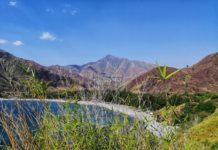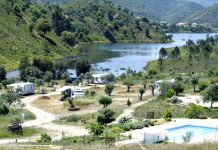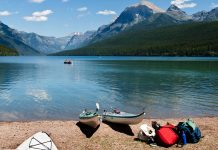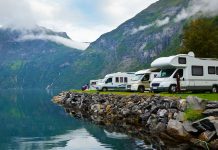There aren’t really too many people who’ve heard of the Mingan Archipelago National Park Reserve, and that includes Canadians. The national park is situated in the Canadian province of Quebec and has been entertaining visitors since it was established back in 1984. It’s just about 25,000 acres in total size.
For those who do know the park, it’s famous for being home to the nation’s biggest collection of erosion monoliths. The park is made up of about 1,000 islets and islands that are dotted along 93 miles of coast. The park consists of just the islands, but in reality the sea shapes many aspects of the local area such as the climate, rocks, and plant and wildlife.
The Mingan Archipelago’s sedimentary rock formations are about 500 million years old. The region used to be covered by a shallow and warm tropical sea which was filled with calcium carbonate and a wide variety of marine organisms. The sea bottom was gradually covered in animal shells and marine sediments over the centuries and was about two miles in thickness. These then turned into rock.
The sea receded over time, the continents shifted, and the rock started to erode. Most of the rock was carried away by nearby rivers, but luckily some rocky mounds were left behind. After more years of fluctuating sea levels, these rocky mounds turned into the islands that make up the Mingan Archipelago National Park Reserve. A wonderful assortment of monoliths, arches, grottoes, and cliffs were also carved out by the sea.
You’ll find the region has a colorful variety of animal and plant life. These include rare plants and a range of marine birds such as razorbills, terns, guillemots, kittiwakes, and puffins. Many of the birds get together on certain islands and create nesting colonies. They’re quite safe on the islands and they’re able to find plenty of food in the surrounding waters.
You’ll find the Mingan Archipelago along the Gulf of St. Lawrence’s north shore. It sits between the communities of Aguanish and Longue-Pointe-de-Mingan. Most people visit the park between June and early September. You can only get to the park by water. If you have your own vessel this is fine, but if you don’t you’ll need to rely on one of the local sea transportation firms. You can catch a boat tour of the park at Havre-St.-Pierre or Longue-Pointe-de-Mingan. Tours generally take from 3 to 5 hours and the size of boat will vary.
You’ll usually be taken to a few different islands where you will be taken on a guided tour. You might be able to catch a glimpse of seals or whales as they swim down the Gulf. You could even see some ancient fossils which date back millions of years. One of the most popular ways to explore the islands is to spend a few days on them and camping out in the wild.
Hikers will also be happy here since there are several hiking trails on the islands and it’s also a haven for kayakers. In fact, you’ll be able to rent a kayak there from a local company. The best way to make the most of the park is to drop by one of its visitor centers. These can be found in Havre-St.-Pierre and Longue-Pointe-de-Mingan. There are several exhibits on display and you’ll be able to find out what different excursions are available etc.










